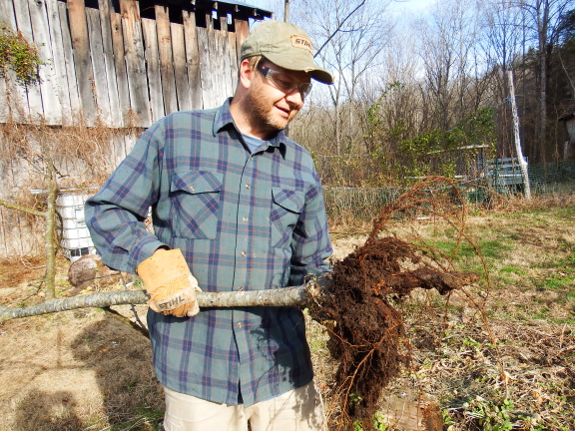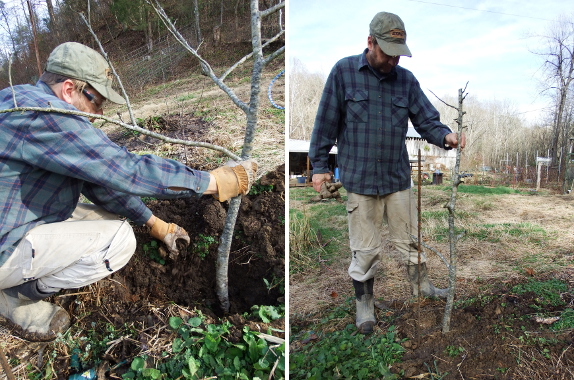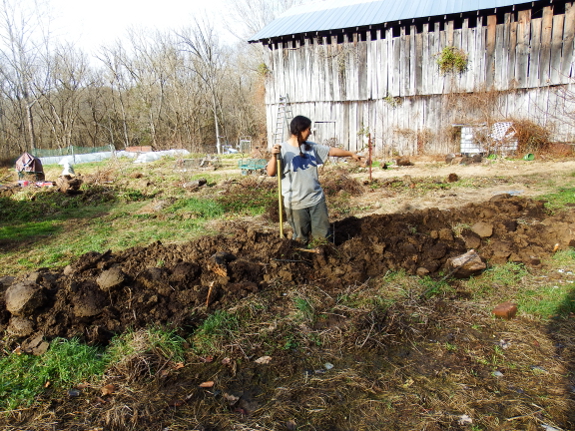
Moving and removing the apples

The so-called forest garden is now officially defunct. Due to extremely high groundwater (and some vole damage
last winter), all three of the apple trees living there had died way
back over the past summer, so Mark wiggled and wiggled and then ripped
them out by the roots. Only one even had enough root mass left to make
it seem worth trying to replant somewhere else, where the ground is more
dependably dry.

Mark suggested planting
the moved tree about eight inches deeper than it had been originally,
which means the plant might root above the graft union. If so, I hope
that I'll still be able to use my high-density training techniques to keep the tree relatively small.
In the meantime, we also
did some drastic pruning to make the branch area more in keeping with
the root area. This is very much an experimental tree, so it won't break
my heart if it doesn't recover from the transplant shock and drastic
pruning, but perhaps the tree will get its feet back under it in this
better soil and will try once again to grow.

So, what's to become of the defunct forest garden? As I've mentioned off and on over the last six months, I'm busy mounding the area up into long raised beds
for annual vegetables (and for hazels, which seem to be the only woody
perennial that thrives in our waterlogged soil). The good news is that
after years of hugelkultur,
the soil is black and rich in many spots, so as long as I can get
plants' roots up out of the underground ocean, perhaps this zone will
turn into a prime growing spot after all. The big test will be tomatoes
in 2015. Stay tuned for more details on drainage patterns (this winter)
and on plant growth (next summer).
Want more in-depth information? Browse through our books.
Or explore more posts by date or by subject.
About us: Anna Hess and Mark Hamilton spent over a decade living self-sufficiently in the mountains of Virginia before moving north to start over from scratch in the foothills of Ohio. They've experimented with permaculture, no-till gardening, trailersteading, home-based microbusinesses and much more, writing about their adventures in both blogs and books.
Want to be notified when new comments are posted on this page? Click on the RSS button after you add a comment to subscribe to the comment feed, or simply check the box beside "email replies to me" while writing your comment.
- Remove comment
